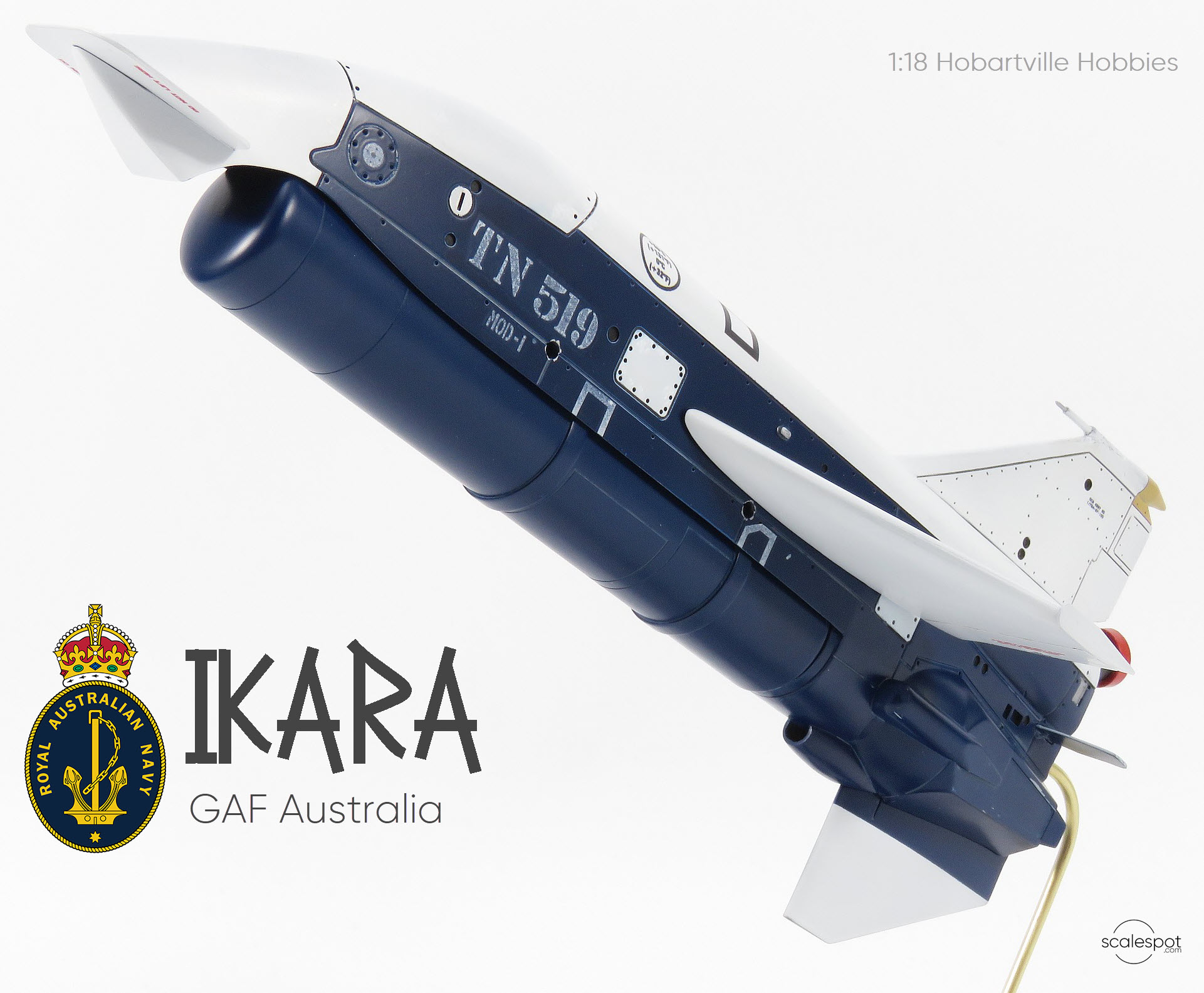GAF Ikara
Hobartville Hobbies
1:18

The Ikara missile was an Australian ship-launched anti-submarine missile, named after an Australian Aboriginal word for "throwing stick". It launched an acoustic torpedo to a range of 10 nautical miles (19 km), allowing fast-reaction attacks against submarines at ranges that would otherwise require the launching ship to close for attack, placing itself at risk. By flying to a distant target, the engagement time was dramatically shorter than provided by short-range weapons, giving the target less time to respond.
This kit is a fully 3D-printed resin model, designed and produced entirely in Australia by Hobartville Hobbies. Even the decal sheet included in the box is locally made, supplied by another Australian company, Dekls, based in SA focusing on mostly Aussie subjects.
I first came across this kit while browsing the Hobartville Hobbies stand at a recent model expo. Among all the displays, this large-scale 1:18 representation of the Ikara missile immediately stood out. Its sleek, unusual shape caught my eye, and what really sealed it for me was the fact that I had never even heard of the Ikara before then. Learning that it was an Australian-designed anti-submarine missile made the kit even more appealing, as it offered both a unique subject and a chance to build something with real local historical significance.
The kit is nicely presented and goes together with minimal effort. The specific Ikara I wanted to model carried a torpedo with a blunt nose, whereas the kit provides one with a rounded profile. To capture the correct look, I designed a replacement nose in Fusion 360 and printed it on my Saturn 4 Ultra. Thanks to the low parts count, assembly moved along quickly, allowing me to complete the build in short order—a definite bonus.
For the RAN blue, I mixed Tamiya X-4 Blue with a few drops of X-18 Semi-Gloss Black to darken it slightly. Sprayed over a grey primer, it gave what I felt was a pretty convincing match to reference photos. The decals in the kit are printed on a single carrier film, which requires careful trimming before application. My only real regret with this build was not creating masks and painting the main markings instead—unfortunately, the white portions of the decals lacked opacity, and the relatively thick carrier film stood out noticeably against the dark blue finish.











